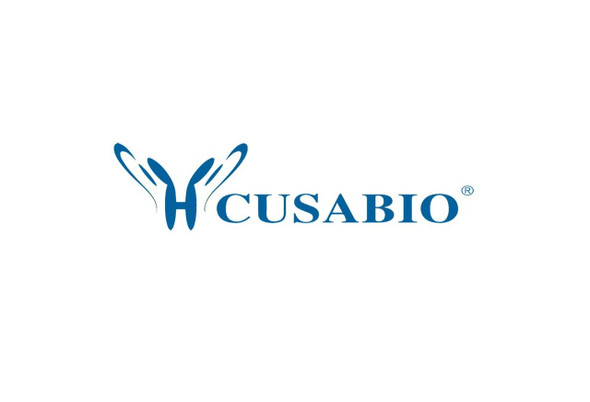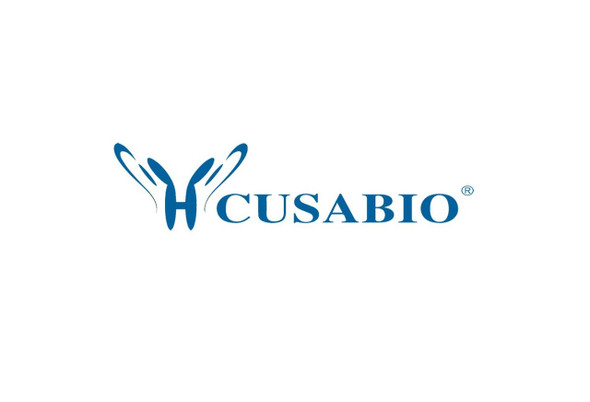Cusabio Virus & Bacteria Recombinants
Recombinant Borna disease virus Envelope glycoprotein p57 (G), partial | CSB-CF345219BIN
- SKU:
- CSB-CF345219BIN
- Availability:
- 18 - 23 Working Days
Description
Recombinant Borna disease virus Envelope glycoprotein p57 (G), partial | CSB-CF345219BIN | Cusabio
Alternative Name(s): gp84 gp94
Gene Names: G
Research Areas: Others
Organism: Borna disease virus (strain V) (BDV)
AA Sequence: FDLQGLSCNTDSTPGLIDLEIRRLCHTPTENVISCEVSYLNHTTISLPAVHTSCLKYHCKTYWGFFGSYSADRIINRYTGTVKGCLNNSAPEDPFECNWFYCCSAITTEICRCSITNVTVAVQTFPPFMYCSFADCSTVSQQELESGKAMLSDGSTLTYTPYILQSEVVNKTLNGTILCNSSSKIVSFDEFRRSYSLTNGSYQSSSINVTCANYTSSCRPRLKRRRRDTQQIEYLVHKLRPTLKDAWEDCEILQSLLLGVFGTGIASASQFLRSWLNHPDIIGYIVNGVGVVWQCHRVNVTFMAWNESTYYPPVDYNGRKYFLNDEGRLQTNTPEARPGLKRVMWFGRYFLGTVGSGVKPRRIRYNKTSHDYHLEEFEASLNMTPQTSIASGHETDPINHAYGTQADLLPYTRSSNITSTDTGSGWVHIGLPSFAFLNPLGWLRD
Source: in vitro E.coli expression system
Tag Info: N-terminal 6xHis-tagged
Expression Region: 23-467aa
Sequence Info: Extracellular Domain
MW: 54.2 kDa
Purity: Greater than 85% as determined by SDS-PAGE.
Relevance: Unprocessed envelope protein p57 is thought to be involved in attachment of the virus to its cell surface receptor. This attachment induces virion internalization predominantly through clathrin-dependent endocytosis. Envelope protein p27 and p29 presumably linked by disulfide bond are the viral type II fusion protein, involved in pH-dependent fusion within early endosomes after internalization of the virion by endocytosis.
Reference: "Conservation of coding potential and terminal sequences in four different isolates of Borna disease virus." Pleschka S., Staeheli P., Kolodziejek J., Richt J.A., Nowotny N., Schwemmle M. J. Gen. Virol. 82:2681-2690(2001)
Storage: The shelf life is related to many factors, storage state, buffer ingredients, storage temperature and the stability of the protein itself. Generally, the shelf life of liquid form is 6 months at -20?/-80?. The shelf life of lyophilized form is 12 months at -20?/-80?.
Notes: Repeated freezing and thawing is not recommended. Store working aliquots at 4? for up to one week.
Function: Unprocessed envelope protein p57 is thought to be involved in attachment of the virus to its cell surface receptor. This attachment induces virion internalization predominantly through clathrin-dependent endocytosis (By similarity).
Involvement in disease:
Subcellular Location: Envelope glycoprotein p57: Host endoplasmic reticulum membrane, Single-pass type I membrane protein, Note=Accumulates in the endoplasmic reticulum when unprocessed, whereas cleaved products reaches cell surface, SUBCELLULAR LOCATION: Envelope glycoprotein p27: Virion, Host cell membrane, Peripheral membrane protein, Note=Appear to be associated with infectious virions, SUBCELLULAR LOCATION: Envelope glycoprotein p29: Virion, Host cell membrane, Single-pass type I membrane protein
Protein Families:
Tissue Specificity:
Paythway:
Form: Liquid or Lyophilized powder
Buffer: If the delivery form is liquid, the default storage buffer is Tris/PBS-based buffer, 5%-50% glycerol. If the delivery form is lyophilized powder, the buffer before lyophilization is Tris/PBS-based buffer, 6% Trehalose, pH 8.0.
Reconstitution: We recommend that this vial be briefly centrifuged prior to opening to bring the contents to the bottom. Please reconstitute protein in deionized sterile water to a concentration of 0.1-1.0 mg/mL.We recommend to add 5-50% of glycerol (final concentration) and aliquot for long-term storage at -20?/-80?. Our default final concentration of glycerol is 50%. Customers could use it as reference.
Uniprot ID: P52638
HGNC Database Link: N/A
UniGene Database Link: N/A
KEGG Database Link: KEGG
STRING Database Link: N/A
OMIM Database Link: N/A









